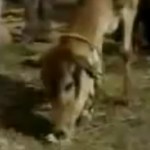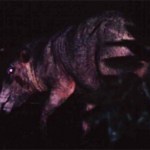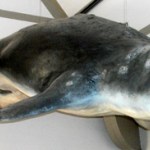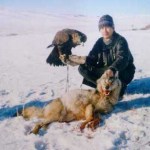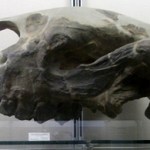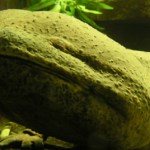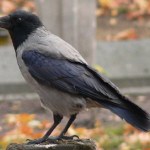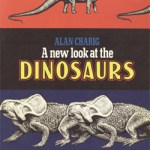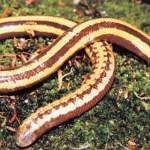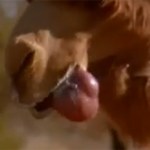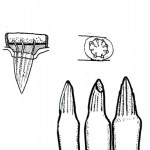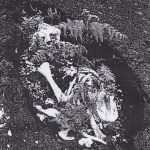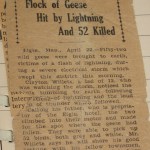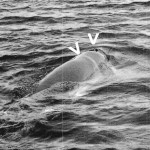
Among the most iconic and remarkable of dinosaurs are the stegosaurs, a mostly Jurassic group of thyreophorans famous for the rows of spikes and plates that decorated their necks, backs and tails [somewhat inaccurate Stegosaurus stenops shown below. I did it many years ago].
As I'm fond of saying, the stegosaur we know best - Stegosaurus - is an atypical member of the group. It's particularly large and possesses lots of plates and but a few spikes. Stegosaurus may also be unusual in lacking shoulder spikes (aka parascapular spines), but this is less clear that it used to be since the '…
People often send me links to stories of the Indian cow that took to eating baby chickens. The story isn't at all new: it appeared in the press in March 2007, and at least one of the cow's lapses into carnivory was filmed. It's shown here (though see below). As with the epic cat fight, do NOT watch this video if you are easily disturbed or upset by scenes of animal death and suffering. I will spoil the surprise by telling you that the cute little baby chicken gets eaten alive by the big nasty cow.
The cow concerned - named Lal - lives in Chandpur, West Bengal (though: the cow in this video…
The increasing availability of automatic cameras (cameras set up to take photos on their own are known in the trade as camera traps) has been a great boon to field biologists, and to people interested generally in the documentation of obscure and elusive creatures. Many animals hardly ever photographed in living state have been documented by these tools, and quite a few taxa never photographed in living state at all have been captured by them too. A few examples of the latter include Lowe's servaline genet Genetta servalina lowei (camera-trapped in 2002, shown at the top of the adjacent…
I've just spent a few days at the Institut royal des Sciences naturelles de Belgique in Brussels, for theropod-related reasons. A great museum, with tons of excellent material on display. I just want to briefly report one interesting discovery here: I was surprised and delighted to find that the recently opened Gallery of Evolution includes a small selection of hypothetical future animals, apparently the inhabitants of the Dixonian epoch. Here's my favourite beast...
It's the giant penguin Neopygoscelis dentatus, though I didn't know this when I was looking at it: I wondered whether it might…
No time for anything new (err, just a tad busy at the moment), so here's something else from the Tet Zoo archives. This article originally appeared on ver 1 in April 2006 and appears here in slightly modified form.
In previous articles we've looked at the ability of large eagles - the Golden eagle Aquila chrysaetos in particular - to kill surprisingly large prey. As in adult pronghorn, adult reindeer, juvenile red deer and juvenile domestic cattle etc. (see links below, or Cooper (1969), Deblinger & Alldredge (1996) and Nybakk et al. (1999)). Such behaviour isn't unique to Golden eagles…
My recent brief mention of Thomas Huxley (in connection with the Dinosaurs and Other Extinct Saurians: A Historical Perspective volume) reminded me to look anew at this Tet Zoo ver 1 post from 2006...
Here's a little known fact. Charles Robert Darwin (1809-1882), the most important biologist of all time, did not spend his entire life as an old man. I despise stereotypes, especially those that are totally erroneous, and whenever I see a picture of 'old man Darwin' I wonder: why is it that so many of our most important scientists are consistently portrayed as old men? Don't get me wrong, I…
Back to the series on pouches, pockets and sacs (for previous articles see links below). The previous article finished by looking at the guttural pouches present in the Mongolian gazelle Procapra gutturosa. This links us nicely to the select group of mammals - perissodactyls, hyraxes, bats and rodents - that possess air-filled structures (called guttural pouches) located in the upper respiratory tract, pressed up close to the tympanic region at the back of the skull. In this article, I'm only going to deal with perissodactyls: the other groups can wait to later.
Guttural pouches are best…
Aww, look at that cute little face, those piggy little, opaque eyes, that wrinkled skin. I just know that you want a little refresher on giant salamanders, so - accompanied with new photos taken at the SMNK in Karlsruhe (by Markus Bühler; thanks) - here's a substantially augmented chunk of text that originally appeared here back in January 2008...
Giant salamanders (or cryptobranchids) are grouped with hynobiids (Asiatic salamanders) in the clade Cryptobranchoidea (or Cryptobranchiformes). There are only three extant species: the North American Hellbender Cryptobranchus alleganiensis, the…
When you discover something new on the internet, you usually find - minutes or hours later - that everyone else already knows about it, and you're just late to the party. And so it is here. But what the hell. Petya Cosmos recently alerted me to this hilarious, and interesting, video. The drama, the suspense, the sheer, epic scale of what unfolds, the music from Predator... make sure you have the volume turned up loud... [NB - only watch the video if you can have the sound on too].
Maybe it's just me, but I found the video hilarious (and brilliantly edited). Then again, I always did find cats…
As you'll know if you have your fingers on the throbbing pulse of dinosaur-related publications, the massive, incredibly pricey volume published by the Geological Society of London, and resulting from the 2008 meeting History of Dinosaurs and Other Fossil Saurians, now exists in dead-tree form. It's titled Dinosaurs and Other Extinct Saurians: A Historical Perspective and (in my totally unbiased opinion) is a definite must-see* for anyone interested in the historical side of Mesozoic reptile research. Here are thoughts and comments on some of the contents.
* I initially wrote 'must have',…
I've been ill, and pressing deadlines for book chapters and other projects have kept me busy. An inability to post stuff on Tet Zoo always frustrates me, as there's just so much Tet Zoo-relevant stuff to get through. And, on that note: I must have said on many occasions that there are whole tetrapod groups, consisting of hundreds or even thousands of species, that I've either never mentioned at all, or have only touched on in passing. I aim to get through as many as I can while the going's good, but there are just so many constraints and distractions. Anyway...
Among the many incomplete…
Everybody knows that camels are weird. As you'll know if you've been keeping an eye on SV-POW! lately, we've recently been quite taken with their necks. But it's not just camel's necks that are weird. Here, we embark on another look at the sometimes bizarre pouches, pockets and sacs present in certain mammals, most of which are outgrowths of the respiratory system.
Relatively little known is that (some) camels possess an inflatable diverticulum on the palate, termed the dhula, dulaa, gulah, goola, qulla or pálu, and known technically as the vesica palatina or palatine diverticulum. It…
I recently posted an updated version of the 'Science of Godzilla' article, and what a great success it was. But I'm kicking myself, because I totally forgot something else I should have mentioned: Tracy L. Ford recently had cause to produce a number of anatomical drawings of Zilla (aka GINO*/Deanzilla/Fraudzilla), the monster bipedal reptile that invades New York in the 1998 TriStar movie Godzilla. Like all Godzilla fans, I don't regard Zilla as a 'Godzilla' at all; rather, it's a charlatan, an imposter. And the movie itself is awful.
* Godzilla In Name Only
Anyway, Tracy has been kind…
My three-part series on the 'explosion of Iguanodon' is now complete and up on the Scientific American guest blog: part I is here, part II here, and part III here. Part III wraps things up and looks briefly at the social inertia that has held back our understanding of Iguanodon sensu lato, and also at the fact that some of the new names are unlikely to stand the test of time [the composite image above combines Greg Paul's illustrations of (at right, top to bottom) I. bernissartensis, Dollodon and Mantellisaurus, the skull of Dakotadon (at top left), and David Norman's skeletal reconstruction…
Part I of a three-part series on the 'explosion of Iguanodon' starts today at the Scientific American guest blog. This first part covers the background before looking at Altirhinus, Owenodon, Mantellisaurus and Dollodon - and there's lots more to come. Please head on over, and be sure to do your commenting there, not here. Thanks.
[composite image above includes colour restorations by Steveoc 86 (from Wikipedia) and skull reconstructions by Greg Paul ©, used with permission)].
Time for a little game. What does this photo represent? Can you work out what happened here? One clue: the skeleton belonged to a large mammal.
Sorry the pic is in black-and-white and a bit fuzzy, it's the best version of the image I have (a colour version exists somewhere - please do pass it on if you have it... UPDATE: thanks indeed to David Bressan of History of Geology). I've been looking for this photo for years (it was taken by Katia Krafft), and am grateful to Tony Butcher for passing it on after discovering it earlier this year.
UPDATE: Many thanks to everyone who had a go at…
Having written (briefly) about the turtle-like shelled placodont Henodus chelyops, it's as good a time as any to provide some more information. For starters, here's a close-up photo (kindly provided by Markus Bühler) showing one of the grooves in the left lower jaw. These gutter-like structures (reportedly) contained a baleen-like apparatus, possibly used in filter-feeding (for more discussion of this, you'll need to see the previous Henodus article, or Reif & Stein (1999), Rieppel (2002a) or Naish (2004)). If you're struggling to interpret the skull as shown in the photo, anterior is…
Back in July 2009 I wrote an article on what little I knew (and had read) about lightning strikes and animal deaths [in composite image below, lightning image by John R. Southern; Angolan giraffe Giraffa camelopardalis angolensis by Hans Hillewaert. Both from wikipedia].
As discussed therein, there are a few cases on record where African bush elephants Loxodonta africana have died after lightning strikes, and there are also references here and there to deaths of wild deer and rhino caused by lightning (so far, I've found one technical paper: Zele et al. (2006)). More impressive are the…
By now you might be relatively familiar with the bizarre soft tissue and bony anatomy of the peculiar, poorly known Pygmy right whale Caperea marginata [a juvenile Caperea that stranded on New Zealand is shown above; original image by New Zealand Department of Conservation, from Te Papa's Blog]. If you missed the relevant articles you might want to check them out here (on the giant, asymmetrical laryngeal pouch), here (on the vertebrae and ribs) and here (on the skull, ribs and tail). These articles (which were very much thrown together without any planning: they were spin-offs of the […


